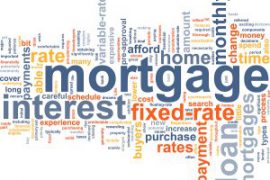At the moment, hardly a day goes by when we don’t hear about property prices in the UK. The obsession with the newspapers and newsreaders mainly comes from the fact that it helps sell print and those listening via the radio and watching TV will almost certainly stop what they are doing to hear and see the figures!
The problem is that since 2000, property prices haven’t performed uniformly across the UK. Some areas such as Nottingham have increased by around 100%, while others like Sevenoaks have increased by four times as much. However, prices tended to react in a similar way by county, so most properties in Nottingham went up by 100% up to 2007, while in Sevenoaks most went up by over 400%.
Since the credit crunch it’s clear that local supply and demand is causing property prices to move in different directions, depending on the property type and the road it sits on. So even county trends are unlikely to reflect what’s happening to your property price, it’s all about a certain property on a particular street.
Lets look at an example in one of our most successful markets: London. Within the area, there are 32 different boroughs. The average price, according to the Land Registry, for a property in London is £414,000. This average though is made up of prices across London Boroughs which range from £240,000 in Newham to £1.2 million in Kensington and Chelsea. That’s a five-fold difference. So hardly uniform and even taking a ‘London average’ is not a relevant statistic for anyone in the market for a property or keen to know what its latest value is.
Taking this analysis a stage further, I was recently presenting at a property investment seminar in London and used examples to show how different properties performed within a few roads of each other in Hackney. Why Hackney? Well this is the borough which has pretty much outperformed any other in London as far as annual property price growth since 2000. On average, London prices grow at 7% per year, whereas in Hackney they grow at 10% per year.
You would think that a successful area like this would mean any property you bought would make money.
But this is yet another average which is completely distorted when looking at what individual properties are worth on a street. One flat bought in Hackney in 2002 was purchased for just £158,000 and 10 years later sold for £178,000. Yes it had gone up, but by about 1% per year. In comparison, a three bed Victorian villa a few streets away in the same year was bought for £150,000 and, with no updating, sold for £1 million. This was a huge annual growth in value of 19% – double the borough’s average.
So, average property prices and headlines from price reports are still useful for economists, politicians and the industry, but from a homeowner, buyer or investor’s perspective, area averages are now pretty much irrelevant, which means the reports and especially the headlines used by the media, are also pretty useless.
What’s of much more use to people is sold property price data and analysis of its history. To better understand how your local market and property are performing, visit http://www.propertychecklists.co.uk/articles/How-to-Work-out-my-Property-Market-Checklist





